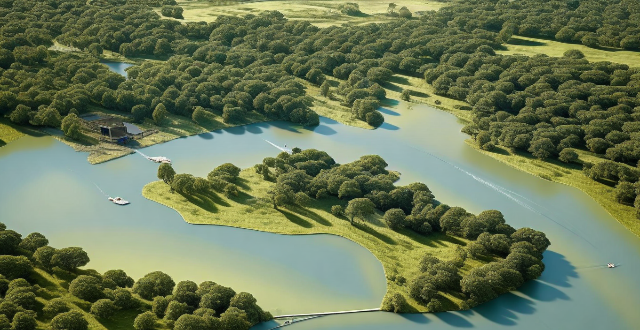Deforestation contributes significantly to extreme weather events by altering climate regulation, reducing biodiversity, causing soil erosion and landslides, and modifying water cycles. To mitigate these impacts, strategies such as reforestation, sustainable forestry practices, ecosystem restoration projects, public awareness campaigns, and policy interventions must be implemented.

The Role of Deforestation in Extreme Weather Events
Deforestation is a significant factor contributing to the occurrence of extreme weather events. It has far-reaching consequences on the Earth's climate system, leading to changes in temperature, precipitation patterns, and atmospheric composition. This essay will discuss the various ways deforestation affects extreme weather events and highlight the importance of reversing this trend for the benefit of our planet.
Impact on Climate Regulation
Forests play a crucial role in regulating the Earth's climate by absorbing carbon dioxide (CO2) from the atmosphere during photosynthesis and releasing oxygen. They also help to regulate local temperatures by providing shade and reducing heat absorption. When forests are cleared, these natural processes are disrupted, leading to an increase in atmospheric CO2 levels and a decrease in the ability of the Earth to regulate its temperature.
Consequences:
- Increased Global Warming: Higher concentrations of CO2 trap more heat in the atmosphere, causing global temperatures to rise.
- Altered Precipitation Patterns: Changes in temperature can lead to shifts in precipitation patterns, resulting in droughts or floods.
Loss of Biodiversity
Forests are home to a vast array of plant and animal species, many of which are unique to specific ecosystems. Deforestation destroys these habitats, leading to a loss of biodiversity that can have cascading effects on ecosystem functioning and resilience.
Consequences:
- Disruption of Ecosystem Services: The loss of biodiversity can impair ecosystem services such as pollination, nutrient cycling, and water filtration, affecting agricultural productivity and freshwater availability.
- Increased Vulnerability to Pests and Diseases: With fewer species to maintain ecological balance, some pests and diseases may proliferate, further stressing ecosystems and increasing their vulnerability to extreme weather events.
Soil Erosion and Landslides
Forests stabilize soil through their root systems, preventing erosion and landslides. When trees are removed, the soil becomes exposed and vulnerable to erosion by wind and water. This can lead to increased sedimentation in rivers and lakes, reduced water quality, and an increased risk of landslides during heavy rainfall events.
Consequences:
- Loss of Topsoil: Topsoil is essential for plant growth and is lost when erosion occurs, reducing agricultural productivity and making it harder for vegetation to reestablish itself after deforestation.
- Increased Flood Risk: Soil erosion can lead to increased runoff during rainstorms, exacerbating flooding downstream.
Alteration of Water Cycles
Forests play a critical role in regulating local water cycles by intercepting rainfall with their canopies, reducing surface runoff and promoting groundwater recharge. Deforestation disrupts these processes, leading to altered water cycles that can contribute to both droughts and floods.
Consequences:
- Reduced Groundwater Recharge: Without forests to slow down surface runoff, less water reaches aquifers, leading to reduced groundwater levels and increased vulnerability to drought conditions.
- Increased Flood Risk: Faster surface runoff during heavy rainfall events can lead to more frequent and severe floods, especially in urban areas downstream from deforested regions.
Mitigating the Effects of Deforestation on Extreme Weather Events
To mitigate the impacts of deforestation on extreme weather events, several strategies must be implemented:
1. Reforestation Efforts: Planting new trees where forests have been cleared can help restore ecosystem functions and reduce the risks associated with deforestation.
2. Sustainable Forestry Practices: Implementing sustainable forestry practices that balance economic needs with environmental protection is essential for maintaining healthy forest ecosystems.
3. Ecosystem Restoration Projects: Restoring degraded lands through initiatives like replanting native species and controlling invasive plants can help restore ecosystem services and reduce vulnerability to extreme weather events.
4. Public Awareness Campaigns: Educating the public about the importance of forests in climate regulation and the consequences of deforestation is crucial for generating support for conservation efforts.
5. Policy Interventions: Governments should enact policies that protect existing forests, promote reforestation, and discourage practices that lead to deforestation.
In conclusion, deforestation plays a significant role in the occurrence of extreme weather events by disrupting natural processes that regulate the Earth's climate, leading to changes in temperature, precipitation patterns, and atmospheric composition. To mitigate these impacts and protect our planet, it is essential to reverse the trend of deforestation through reforestation efforts, sustainable forestry practices, ecosystem restoration projects, public awareness campaigns, and policy interventions.